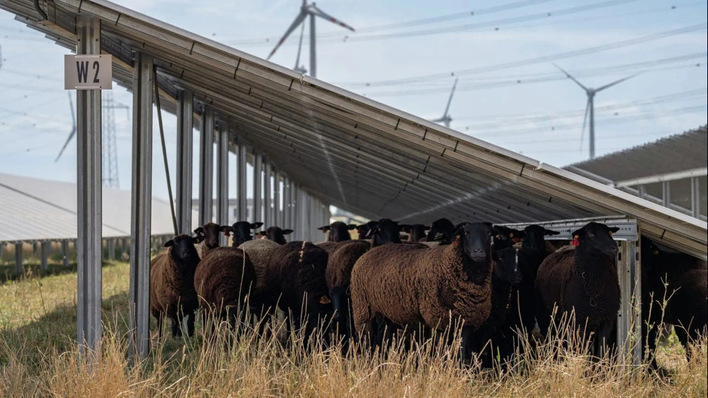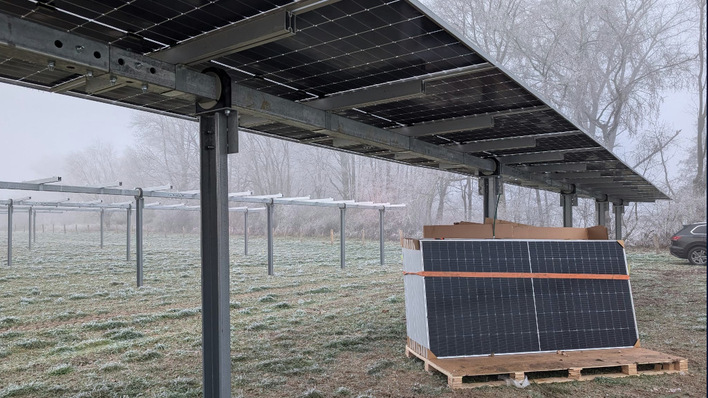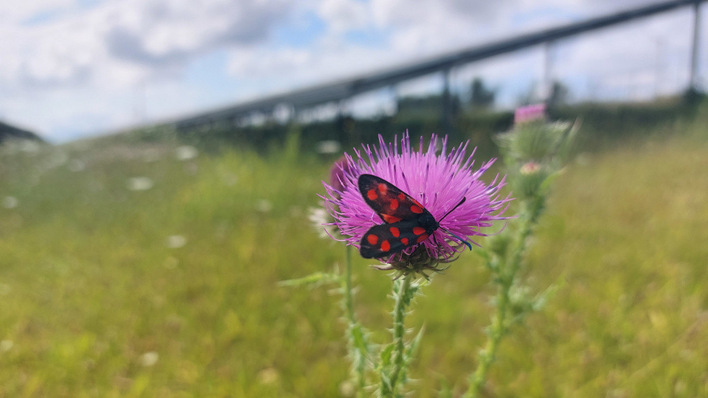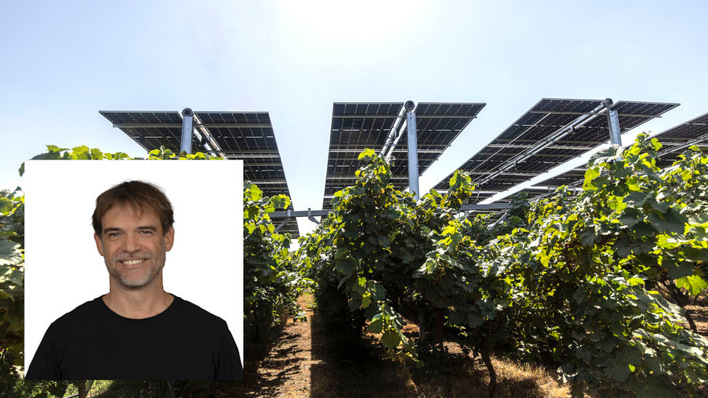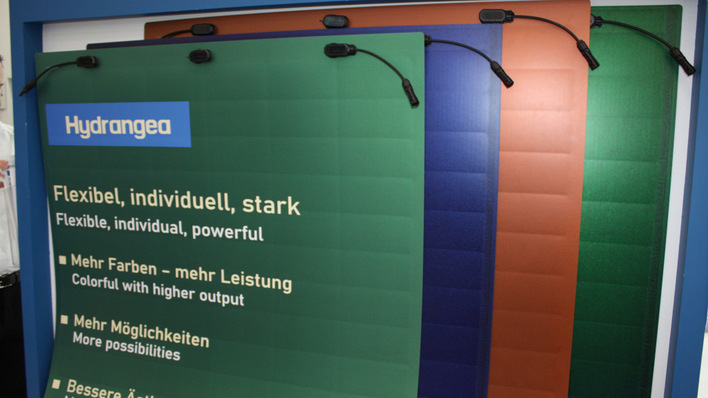Many service providers already have working groups on the topic of agro-PV. But even though excellent preliminary work and studies have been demonstrating the clear advantages for agriculture, especially in times of drought, the real breakthrough has not yet been achieved. At the same time, frequent droughts have created massive pressure for action in agriculture and politics.
The reasons for the still lagging implementation clearly lies in the economic efficiency of the systems. Many solutions are too expensive, have too little electricity yield or hinder work in the fields. Moreover, the positive effects on agriculture are still rather moderate and not yet interesting enough to encourage farmers to take action.
Minimal shading even with higher crops
A new system from a Berlin-based start-up, for which a patent application is pending, will bring new momentum to these developments: The new Flower-Power System combines flower strips with conventionally high mounting systems and is therefore very cost effective. A high yield is guaranteed by the flowering strips in front of the lower edge of the modules minimising shading even with higher crops.
In case you missed this one:
Floating PV plant exceeds expectations
Field cultivation is also possible because the flowering strips always provide sufficient distance from the solar plant, thus preventing damage. However, depending on the cultivation technique used, relatively wide row spacing of 20 to 50 metres may be required, depending on the necessity of using boom spraying systems for field work.
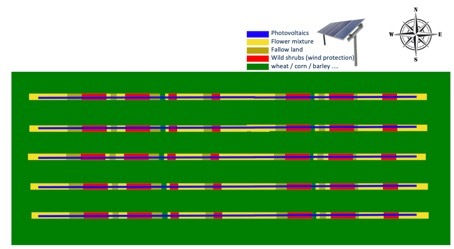
Korrmann
While the more or less conventional PV construction offers a clear cost benefit for the solar investor, the farmer loses relatively large areas for cultivation with the additional early flowering plants and fallow strips. The central advantages for agriculture only become apparent when one takes a closer look underneath the solar installations. Here, water management measures such as wind-breaks, e.g. irregular patches of wild shrubs and sinks for water harvesting during heavy rainfall can be found.
Up to 30 per cent more yield
During droughts, the soil dries out and loses a large part of its water absorption capacity. As a result, the water can no longer be absorbed by the field during the increasingly frequent heavy rainfall. The water then runs off the field in large streams, taking the fertile top soil with it. This is exactly what can be prevented with the help of rain water sinks. The water then accumulates in these places and can soak into the entire field over several days, where it is stored for a long time. The shading of the sinks by the PV system is of essential importance here, as without shading these sinks would dry out the field.
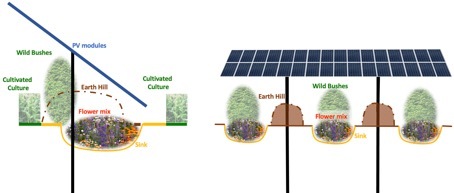
Korrmann
The system is rounded off by other agro-forestry wind protection elements which neither disturb the cultivation nor shade the solar system. In this way, not only is there more water available for the field, but the hill sink profile also creates a 20 per cent larger surface for the flower strips, which further enhances insect conservation and biodiversity. The approximately five to ten per cent reduction in the area under cultivation is offset by a 20 to 30 per cent increase in yields with better prices during drought years.
See also:
How Germany can become climate-neutral by 2050
In order for the Flower Power plant to pay for itself quickly and for farmers to benefit from the additional source of income from the generation of electricity, they should use a total of at least ten hectares of agricultural land (about two megawatts). The more area that can be used, the better! To maximise the benefits, it is also a good idea to join forces with neighbouring landowners. (mfo)




